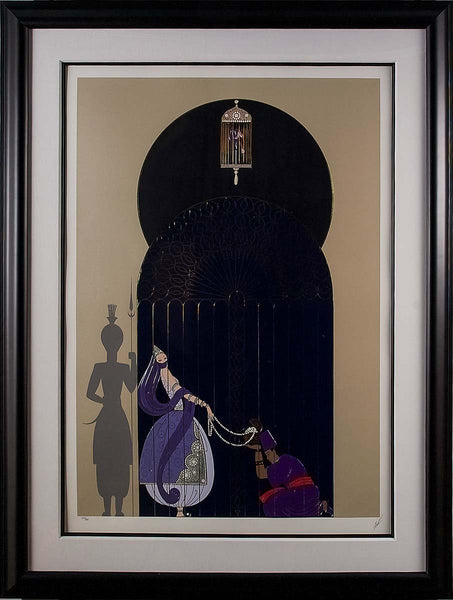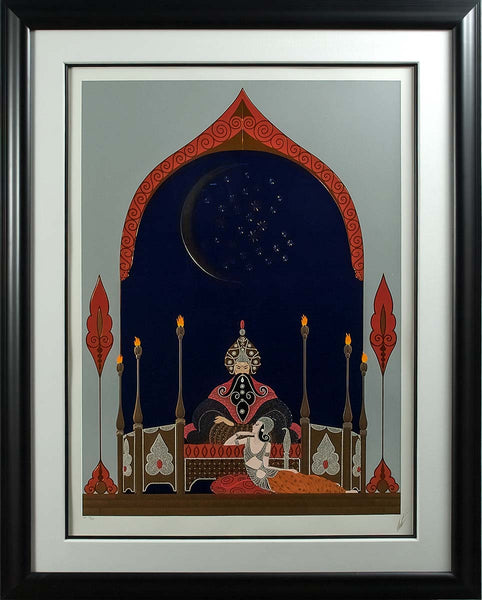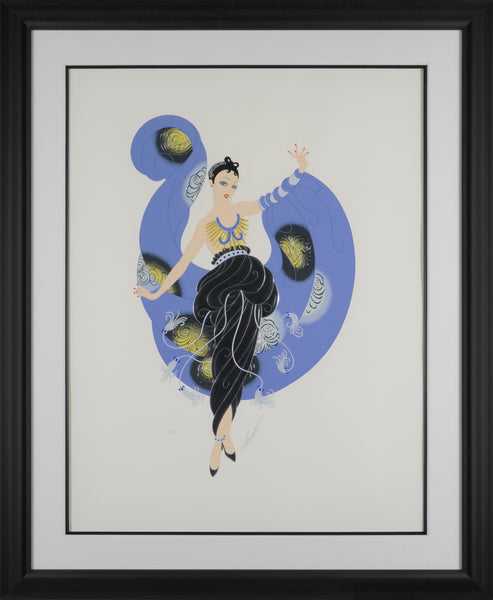About the Work
Faubourg St. Honore sculpture size: 8 1/2'' x 12" x 20 3/4", cast in bronze using the lost wax process.This image was originally created as a fashion drawing for Harper's Bazaar in September 1920.
The Rue Faubourg St. Honore is a famous street in Paris's 8th District. While narrow compared to Paris's Champs Elysees, it is considered the capital of Haute Couture due to the presence of major fashion houses including Gianni Versace, Christian Dior, Hermes, Jean Paul Gaultier, Christian Lacroix, Yves Saint Laurent Rive Gauche and Chloe. It can be compared to New York's Madison Avenue and Los Angeles' Rodeo Drive.
About the Artist
Erté was born Romain de Tirtoff in St. Petersburg, Russia on November 23rd, 1892 and was raised amidst Russia's social elite. At the age of five he created an evening gown for his mother and managed to persuade the adults to craft it, they were astounded by the results. In 1912, Romain left St. Petersburg for Paris at the age of nineteen with the aim of becoming an artist. After working with Paul " Le Magnifique" Poiret on several theatrical productions Romain, still under the pseudonym of Erte, began to work more independently. He hand-crafted original costume and fashion designs for many of the era’s most renowned actresses, including Joan Crawford, Lillian Gish, Marion Davies, Anna Pavlova, Norma Shearer, and others. His masterpieces for the stage included extravagant production designs at venues such as New York’s Radio City Music Hall, the Casino de Paris, and the Paris Opera. In 1915 he began his long professional relationship with Harper's Bazaar and created 240 covers for the esteemed magazine. For 6 months in 1916, Erté simultaneously worked with Vogue as well. As a result of his highly publicized success, Erté would later be called the father of the ‘Art Deco’ movement.






